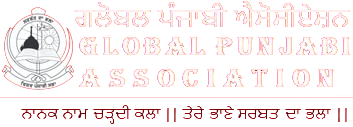Global Punjabi Association Meeting – 20 June 2025, Chandigarh
1. Mission of GPA –
To promote inter-faith harmony within the Punjabi community worldwide by highlighting our shared culture, language, and legacy and strengthening the concept of Punjab, Punjabi and Punjabiat
2. Spirit of the Association –
GPA is not a religious or political organization but a cultural bridge reconnecting once-unified communities. Our guiding motto is “Celebrate that which unites, understand that which differs.”
With the blessings of Guru Nanak Dev Ji and Bhagwan Krishna, we aim to strengthen unity village by village, family by family, and heart to heart.
3 . History and Foundation of GPA –
Founded in 2022, the GPA rose from the awareness that Hindus, Sikhs and all other Punjabis were unified in their belief until 1839. It was said that “Punjab Vasda Guruan Te Peeran De Na Tee.” Sanatan Dharam had strong roots and influence in Punjab and seamless integated with Sikh religious thiught and philisophy. The divisions have been externally influenced due to some self-serving interests.
Established by community leaders, scholars, retired officials, and youth, GPA was born to rebuild Punjabiyat – our shared language, values, and identity.
GPA avoids blame games of the past and focuses on cultural revival and grassroots collaboration.
4 . The Objectives of the Association
(a) Foster inter-faith unity through the celebration of our common heritage.
(b) Revive the Punjabi language, culture, and traditions that grew from our multi-cultural villages.
(c) Help youth reconnect with their ancestral roots and Punjabi identity.
5. The methodology identified to achieve the objectives
(a) Create platforms for shared service, learning, and celebration.
(b) Celebrate all aspects that reflect unity.
(c) GPA organizes joint celebrations across religious lines, including
– Guru Nanak Jayanti to celebrate spiritual wisdom for all humanity;
– Krishna Janmashtami to celebration dharma;
– Baisakhi, as integral to Punjab and also birth of the Khalsa.
– Lohri as a symbol of Punjabi rural and folk tradition.
– Independence Day & Republic Day as a shared national legacy
These events are held in community halls, public parks, or residential spaces, promoting inclusivity and unity.
It is proposed to include more activities at the academic and social level
6. Geographic Presence – GPA has active units in:
– Punjab
– Delhi
– Mumbai
– Kashmir
– Haryana
– Uttar Pradesh
– UK
– Canada
– Australia
Outreach plans in the future include engaging the Punjabi diaspora in:
– United States
– New Zealand
– Dubai
– Kenya
Other areas having a significant Punjabi population within Bharat and across the world will also be engaged
7. Member Legacy –
GPA draws strength from members with deep historical roots, including:
– Descendants of original Panj Pyare:Bhai Daya Singh Ji and Bhai Dharam Singh Ji.
– The Royal Family of Nabha: Authors of the Anand Marriage Act of 1909.
– Heirs of Maharaja Ranjit Singh’s Ministers
– Prominent personalities from all walks of lives who have an inclination towards social and cultural upliftment of Punjab
GPA has found support from several functional NGOs and social service platforms like
– World Cancer Care
– Humanity First
Efforts are on to integrate with more organisations and institutions
8 . Challenges :
(a) No formal headquarters. Operations are run from members’ homes.
(b) Lack of Government Support: No grants or recognition for social services.
(c) No publications and media platforms for sharing historical insights and community updates.
(d) Limited Financial Resources – activities are funded by member contributions and personal donations.
9. Proposed Action Points
(a) Advocate for a national presence and permanent office.
(b) Build partnerships and alliances with like-minded cultural bodies, government institutions, education institutions, think tanks, etc.
(c) Launch a GPA journal/magazine, website, and social media portals with articles, oral histories, and research.
(d) Media Outreach: Highlight success stories in joint community service through media.
(e)Youth Involvement: encourage youth participation through heritage walks, seminars, and cultural programs.
(f) Awareness Campaigns – Create school and university campaigns on Punjab’s shared legacy.
